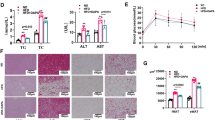Abstract
Phosphatidylinositol 3-kinase (PI3K) plays an important role in the metabolic actions of insulin and is required for adipogenesis. Regulatory subunit 1 of PI3K (PIK3R1) is a critical component of the PI3K signaling pathway. Peroxisome proliferator-activated receptor gamma (PPARγ) is a key regulator of adipogenesis. Although the PPARγ agonist rosiglitazone induces the expression of PIK3R1, the transcriptional regulation of PIK3R1 in adipocytes remains unknown. In this study, we investigated whether PIK3R1 is a direct target of PPARγ. The level of PIK3R1 expression in 3T3-L1 cells was increased after the induction of adipocyte differentiation and was also induced by overexpression of PPARγ. Furthermore, the upregulation of PPARγ-mediated PIK3R1 expression enhanced the insulin-stimulated AKT activation in 3T3-L1 cells. Two putative peroxisome proliferator response elements (PPREs) in the PIK3R1 promoter were identified as PPARγ binding sites. By chromatin immunoprecipitation, we observed that PPARγ interacts with the two PPRE regions of the PIK3R1 promoter in mature adipocytes. In addition, luciferase reporter assays showed that the −1183/−1161 and −573/−551 regions of the PIK3R1 promoter contain essential elements for PPARγ binding. Taken together, these results suggest that PPARγ is essential for the transcriptional activity of PIK3R1 during adipogenesis.




Similar content being viewed by others
References
Kershaw EE, Flier JS (2004) Adipose tissue as an endocrine organ. J Clin Endocrinol Metab 89:2548–2556
Galic S, Oakhill JS, Steinberg GR (2010) Adipose tissue as an endocrine organ. Mol Cell Endocrinol 316:129–139
Kawai M, Rosen CJ (2010) PPARγ: a circadian transcription factor in adipogenesis and osteogenesis. Nat Rev Endocrinol 6:629–636
Leto D, Saltiel AR (2012) Regulation of glucose transport by insulin: traffic control of GLUT4. Nat Rev Mol Cell Biol 13:383–396
Duncan RE, Ahmadian M, Jaworski K et al (2007) Regulation of lipolysis in adipocytes. Annu Rev Nutr 27:79–101
Yu W, Chen Z, Zhang J et al (2008) Critical role of phosphoinositide 3-kinase cascade in adipogenesis of human mesenchymal stem cells. Mol Cell Biochem 310:11–18
Xu J, Liao KJ (2004) Protein kinase B/AKT 1 plays a pivotal role in insulin-like growth factor-1 receptor signaling induced 3T3-L1 adipocyte differentiation. Biol Chem 279:35914–35922
Christoffersen CT, Tornqvist H, Vlahos CJ et al (1998) Insulin and insulin-like growth factor-I receptor mediated differentiation of 3T3-F442A cells into adipocytes: effect of PI 3-kinase inhibition. Biochem Biophys Res Commun 246:426–430
Magun R, Burgering BM, Coffer PJ et al (1996) Expression of a constitutively activated form of protein kinase B (c-Akt) in 3T3-L1 preadipose cells causes spontaneous differentiation. Endocrinology 137:3590–3593
Aubin D, Gagnon A, Sorisky A (2005) Phosphoinositide 3-kinase is required for human adipocyte differentiation in culture. Int J Obes (London) 29:1006–1009
Rieusser J, Chambrier C, Bouzakri K et al (2001) The expression of the p85alpha subunit of phosphatidylinositol 3-kinase is induced by activation of the peroxisome proliferator-activated receptor gamma in human adipocytes. Diabetologia 44:544–554
Quandt K, Frech K, Kara H, Wingender E, Werner T (1995) Matlnd and MatInspector: new fast and sensitive tools for detection of consensus matches in nucleotide sequence data. Nucleic Acids Res 23:4878–4884
Kim SP, Ha JM, Yun SJ et al (2010) Transcriptional activation of peroxisome proliferator-activated receptor-gamma requires activation of both protein kinase A and Akt during adipocyte differentiation. Biochem Biophys Res Commun 399:55–59
Jiang G, Dallas-Yang Q, Li Z et al (2002) Potentiation of insulin signaling in tissues of Zucker obese rats after acute and longterm treatment with PPARγ agonists. Diabetes 51:2412–2419
Smith U, Gogg S, Johansson A et al (2001) Thiazolidinediones (PPARγ agonists) but not PPARα agonists increase IRS-2 gene expression in 3T3-L1 and human adipocytes. FASEB J 15:215–220
Liao W, Nguyen MT, Yoshizaki T et al (2007) Suppression of PPAR-gamma attenuates insulin-stimulated glucose uptake by affecting both GLUT1 and GLUT4 in 3T3-L1 adipocytes. Am J Physiol Endocrinol Metab 293:219–227
Rieusset J, Roques M, Bouzakri K et al (2001) Regulation of p85alpha phosphatidylinositol-3-kinase expression by peroxisome proliferator-activated receptors (PPARs) in human muscle cells. FEBS Lett 502:98–102
Acknowledgments
This research was supported by grants from Basic Science Research Program through the National Research Foundation of Korea (NRF) (No. 2012R1A1B3001134), and by the Next-Generation BioGreen 21 Program (No. PJ008116), Rural Development Administration (RDA), Korea.
Author information
Authors and Affiliations
Corresponding author
Rights and permissions
About this article
Cite this article
Kim, YJ., Kim, HJ., Chung, K.Y. et al. Transcriptional activation of PIK3R1 by PPARγ in adipocytes. Mol Biol Rep 41, 5267–5272 (2014). https://doi.org/10.1007/s11033-014-3398-9
Received:
Accepted:
Published:
Issue Date:
DOI: https://doi.org/10.1007/s11033-014-3398-9




